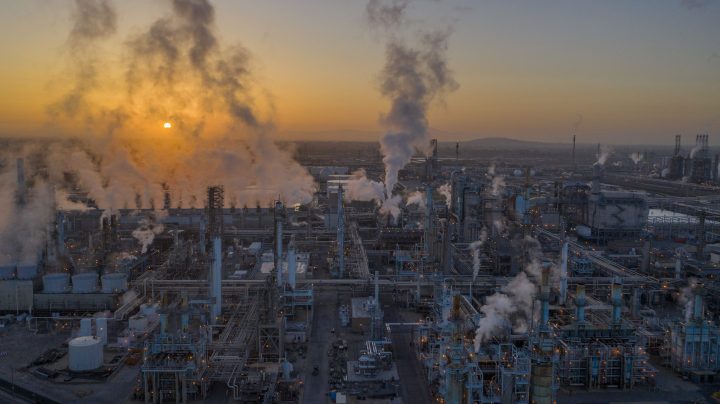
A fraction of oil and gas profits would fund methane emissions cuts, global energy agency says
A fraction of oil and gas profits would fund methane emissions cuts, global energy agency says

This earnings-reporting season, some of the world’s biggest energy companies have notched yet another quarter of robust profits, extending a streak that started last year when Russia’s invasion of Ukraine sent prices skyrocketing.
A recent report from the International Energy Agency finds that an investment of $75 billion — a fraction of the oil and natural gas industry’s profits last year — would meaningfully lower emissions of methane.
The main ingredient in natural gas, methane is also one of the biggest contributors to global warming. And critics say progress in limiting its release has been slow.
On a stretch of California highway on the border of Lamont and Bakersfield, surrounded by a patchwork of cornfields and oil rigs, Cesar Aguirre of the Central California Environmental Justice Network fired up an infrared camera.
He aimed it at the rusting metal columns and pipes of a refinery that’s been operating for the last nine decades.
“The big tail right here,” he said, pointing at the camera’s viewfinder. “Those are all emissions that are coming off of the flare.”


The stream of hydrocarbons that was visible in the viewfinder can be hard to see with the naked eye. “And there’s dozens of pinhole leaks inside of this operation,” Aguirre said.
Aguirre goes out surveilling facilities like this all the time. After this visit, he said, he planned to file a report with state regulators on emissions coming off a tank on the refinery grounds.
“I can see here that the black tube has a hatch open, and it looks like it’s just blowing out into the open air,” he said.
While many people associate carbon dioxide with global warming, methane is much more potent in affecting the climate, though it is not as common in the atmosphere.
“Methane has over 80 times the warming impacts of carbon dioxide,” said Arvind Ravikumar, co-director of the Energy Emissions Modeling and Data Lab at the University of Texas at Austin, adding that the gas lasts an average of 12 years in the atmosphere.
“If we immediately and quickly reduce man-made methane emissions now, we should start seeing the effect of those reductions within our lifetimes,” he said.
Numerous governments, scientists, tech startups and even the oil and gas industry itself say they’re working on it.
“We are a major source of methane emissions in the United States and globally, alongside agriculture and other natural sources. And so we know that we need to do our part to reduce methane emissions,” said Aaron Padilla, vice president of corporate policy at the American Petroleum Institute, a trade group.
And it’s made that a priority, with some success, he said. “When you can prevent methane from leaking or being emitted, then there’s more natural gas that you can sell, and consumers can use this energy.”
Late last month, the Environmental Protection Agency and Department of Energy announced around $1.55 billion in Inflation Reduction Act funding to track and reduce methane emissions from oil and gas operations.
The EPA is also developing regulations aimed at improving the accuracy of the industry’s reporting of methane and other greenhouse gas emissions.
An older well was audibly leaking when Clark Williams-Derry, energy finance analyst at the Institute for Energy Economics and Financial Analysis, stumbled across it on a trip to the Bakersfield area last year. California’s Central Valley is dotted with older wells.
“When it’s so easy for an amateur to walk out into the field and find a hissing well, you know the problem is real,” Williams-Derry said.
It might make some economic sense for industry players to capture methane escaping from active equipment.
But with the older stuff, “cleanup is just an expense,” Williams-Derry said. “There is very little benefit to these companies to pay for the sometimes tens or even hundreds of thousands of dollars that it can cost to plug and properly abandon an idle well.”
Methane emissions from these wells may be invisible, he added. But that doesn’t reduce the climate and safety threat they pose.
There’s a lot happening in the world. Through it all, Marketplace is here for you.
You rely on Marketplace to break down the world’s events and tell you how it affects you in a fact-based, approachable way. We rely on your financial support to keep making that possible.
Your donation today powers the independent journalism that you rely on. For just $5/month, you can help sustain Marketplace so we can keep reporting on the things that matter to you.












